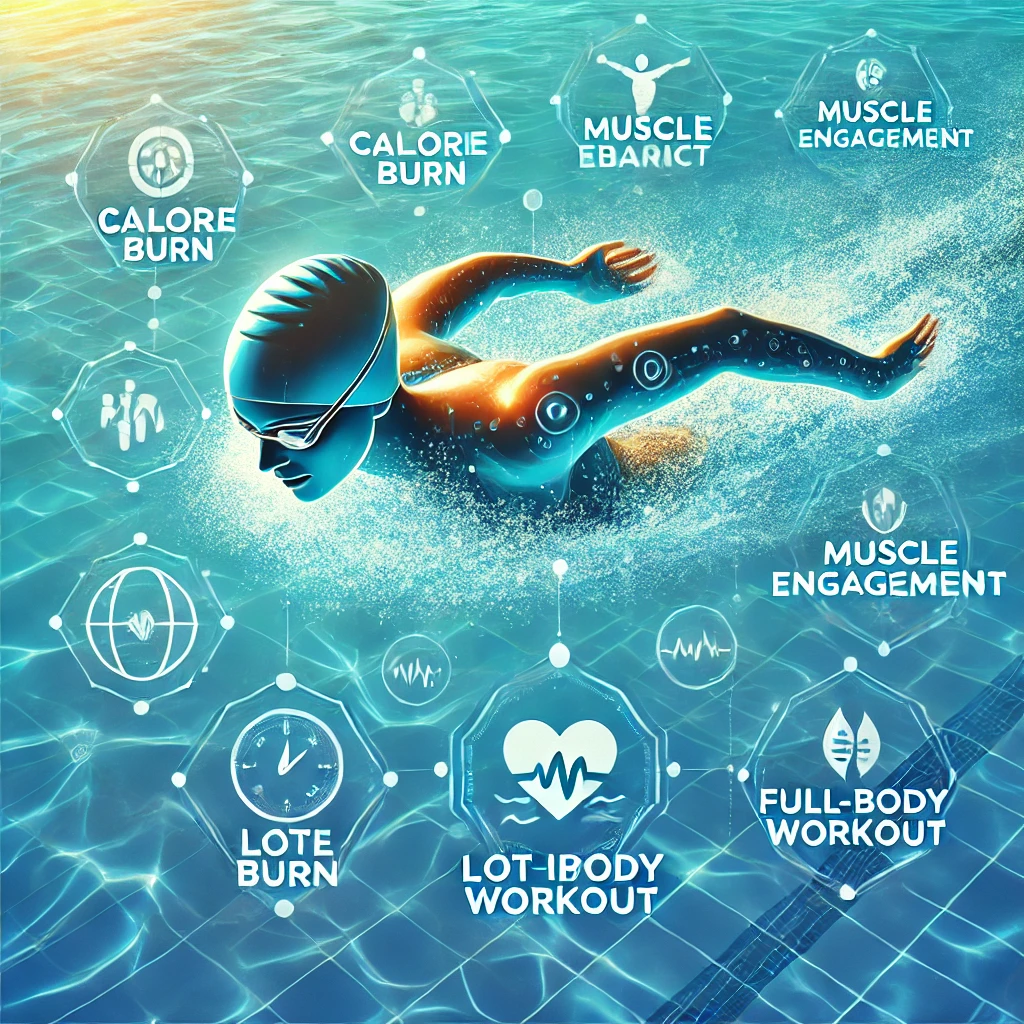Swimming is a fantastic full-body workout that burns significant calories depending on factors like your weight, swimming style, and intensity. On average:
Contents
| Weight (in kg) | Light Swimming (Calories/hour) | Intense Swimming (Calories/hour) |
|---|---|---|
| 60 | 360 | 590 |
| 70 | 420 | 700 |
| 80 | 480 | 840 |
The calorie burn varies across different swimming strokes:
- Freestyle: 400–700 calories/hour
- Breaststroke: 500–800 calories/hour
- Butterfly: 600–900 calories/hour
- Backstroke: 400–600 calories/hour
Benefits of Swimming
Swimming is a low-impact exercise suitable for all fitness levels. Here are its major benefits:
- Full-Body Workout: Engages nearly all muscle groups.
- Heart Health: Improves cardiovascular endurance.
- Low Impact: Protects joints from strain.
- Calorie Burn: Helps with weight loss.
- Stress Relief: Releases endorphins and promotes relaxation.
- Spinal Health: Decompresses and strengthens the spinal column.
Cons of Swimming
Though swimming has many advantages, there are some drawbacks to consider:
- Accessibility: Requires access to a pool or open water.
- Time Investment: May require more time for preparation and travel.
- Risk of Chlorine Exposure: Pool chemicals can irritate skin and eyes.
- Technique-Dependent: Benefits are limited without proper form.
- Water Temperature Sensitivity: Cold water can be uncomfortable for some.

Table: Benefits vs. Cons of Swimming
| Benefits | Cons |
|---|---|
| Full-body workout | Requires access to a pool |
| Improves cardiovascular health | Time-consuming preparation |
| Low impact on joints | Exposure to pool chemicals |
| Stress relief and relaxation | Proper technique is essential |
| Supports spinal health | May feel uncomfortable in cold water |
Swimming vs. Running
| Aspect | Swimming | Running |
|---|---|---|
| Impact | Low impact; gentle on joints | High impact; can strain knees and ankles |
| Calorie Burn | 400–900 calories/hour | 500–1000 calories/hour |
| Muscles Used | Full-body workout | Primarily lower body |
| Accessibility | Requires a pool or water body | Can be done almost anywhere |
| Stress Relief | Promotes relaxation through rhythmic motions | Provides a runner’s high through endorphins |
| Spinal Health | Decompresses and strengthens the spine | May strain the lower back over time |
How to Burn Fat Using Swimming
- High-Intensity Intervals: Alternate between fast and slow swimming laps.
- Frequent Sessions: Swim at least 3–5 times a week for effective fat loss.
- Mix Strokes: Use calorie-intensive strokes like butterfly and breaststroke.
- Focus on Duration: Aim for at least 30–45 minutes per session.
- Incorporate Resistance: Use kickboards or pull buoys to increase effort.

What Swimming Can Do Best for Our Spinal Column
Swimming offers unparalleled benefits for spinal health:
- Decompression: Reduces pressure on spinal discs, alleviating back pain.
- Muscle Strengthening: Engages core and back muscles to improve posture.
- Mobility: Enhances flexibility and range of motion in the spine.
- Rehabilitation: Ideal for recovering from injuries, especially herniated discs.
Would you like any further adjustments or specific sections elaborated on?









